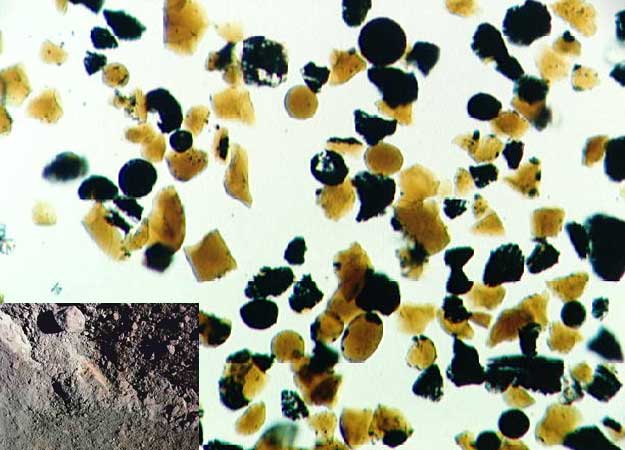
|
Credit & Copyright: Apollo 17 Crew,
NASA
Explanation:
How did orange soil appear on the Moon?
This
mystery began when astronaut
Harrison Schmidt noticed the off-color patch near
Apollo 17's
Taurus-Littrow landing site in 1972.
Schmidt and fellow astronaut
Eugene Cernan scooped up some of the
unusual orange soil for detailed inspection back on Earth.
Pictured above is a return sample shown greatly magnified,
with its discovery location shown in the
inset.
The
orange soil contains particles less than
0.1 millimeter across, some of the smallest
particles yet found on the Moon.
Lunar geologists now think that the
orange soil was created during an ancient
fire-fountain.
Detailed chemical and dating
analyses indicate that during an explosive volcanic eruption 3.64 billion years
ago,
small drops
of molten rock cooled rapidly into the
nearly spherical colored grains.
The origin of some of the unusual
elements found in the soil,
however, remains unknown.
|
January February March April May June July August September October November December |
| ||||||||||||||||||||||||||||||||||||||||||||||||
NASA Web Site Statements, Warnings, and Disclaimers
NASA Official: Jay Norris. Specific rights apply.
A service of: LHEA at NASA / GSFC
& Michigan Tech. U.
Based on Astronomy Picture
Of the Day
Publications with keywords: Apollo 17 - orange soil - Moon
Publications with words: Apollo 17 - orange soil - Moon
See also:
